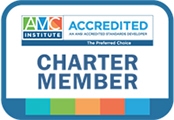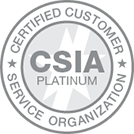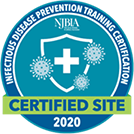The 2019 mid-year meeting of the Mid-Atlantic Society of Association Executives (MASAE) featured a multifaceted look at the ASAE ForesightWorks, the evidence-based research initiative designed to help associations with environmental scanning and planning for change.
I attended an “un-conference” session which is a moderated round table discussion where participants shared ideas, questions, and experiences on their group’s driver of choice. This particular style session left me a lot of ideas and notes to take back to my association.
The “un-conference” on “Diversity and Inclusion” (driver #13) featured a lively exchange of insights and shared challenges. This driver addresses the reality that as America, society, and workplaces continue to grow more diverse and inclusive, the workplace will be a primary arena for contending views and issues to be worked out, and inclusion efforts must be treated as a systemic priority.
Participants agreed on the importance of having a Board that reflects the composition of their organization. While the term “male, pale, stale” to describe volunteer leadership comprising primarily older white men generated laughter around the table, everyone agreed that it is a reality for some groups, and that evolving to become more representative of the organization’s constituency should be a priority of leadership development and recruiting.
In addition, part of being diverse and inclusive is working with leadership so that they understand the priorities of their membership. Diversity is not restricted to race, nationality, gender, age, or gender identity. Members can also be diverse with their interests. A participant shared her experience of educating her board that the membership at large did not share their enthusiasm for the traditional full day golf outing. Attendance was low and the return on the investment of resources was lagging. Plus, members could rightfully assume that the association did not care to develop social programs that appealed to their interests. By helping her Board recognize that what appealed to them was not necessarily appealing to their membership, they were able to shift their resources and attention to diversifying programs that engaged and included more members.
Another interesting component of the representative board discussion was the importance of avoiding tokenism and giving equal importance to all voices. A younger member of the group shared how she did not want to serve on a Board simply to represent the “younger members’ perspective” in their discussions; she wants her input recognized because what she has to say has as much value as that of the other Board members. Her value is not just that she represents an identified constituency that the Board wants represented.
During the discussion it became clear that for association leaders, the challenges and benefits of diversity go beyond just having a good representation on your Board of Directors. It means ensuring that your association is marketing to all demographics and creating programs that appeal to a variety of constituents. Associations must strive to achieve the balance that comes with accommodating baby boomer members, who may need training and encouragement to embrace technological innovations, with the online automation that younger generations expect in their day to day. Similarly, younger members may need coaching to understand and embrace the value of face to face networking and in-person meetings, when so much of their education, business interaction, and even socializing is done online.
Associations must find a way to market and be welcoming to both of these groups. One executive shared that in order to help older members embrace their digital membership, they have a help desk at the annual meeting for one-on-one support to set up and manage their online membership, offer how-to video tutorials on their website, and sought member input to create helpful FAQs based on member experiences. Ideas for helping younger members recognize the value of face-to-face meetings included Instagram video posts that walked them through various components of the in-person event, so that they could see it unfold in real time, and in person mentor match ups for the annual meeting.
At the MASAE Mid-year meeting, offering the “un-conferences” was itself an effort to diversify options to address different learning styles and preferences. Attendees wanting the traditional speaker presentation could select that, while others preferring the round table open discussion had that as an option.
Associations must also help create their own future by diversifying into new markets that will help grow their fields. Professions, trades, fields of study, and hobbies should not be restricted to their stereotypical setting, gender, culture, or background. Avid gardeners, landscapers, and equestrians can be found in cities as well as rural and suburban areas; men and women can be equally passionate about needle arts and design; social media and IT experts are not exclusively found on college campuses. It is not enough for associations to be diverse by welcoming a variety of members; associations should actively seek out members from all backgrounds and create pathways for them to nurture their interest. This is essential for creating the future of their field and the organization.
The group also discussed the importance of understanding the diversity of members in order to make them feel welcome and included. If an association is interested in capturing the demographic statistics of the membership, they must make the options inclusive beyond cisgender, so that all members are able to identity as they choose. Participants were interested in securing the right information to help associations present these questions in the proper way, and it was suggested that ASAE may have a resource.




